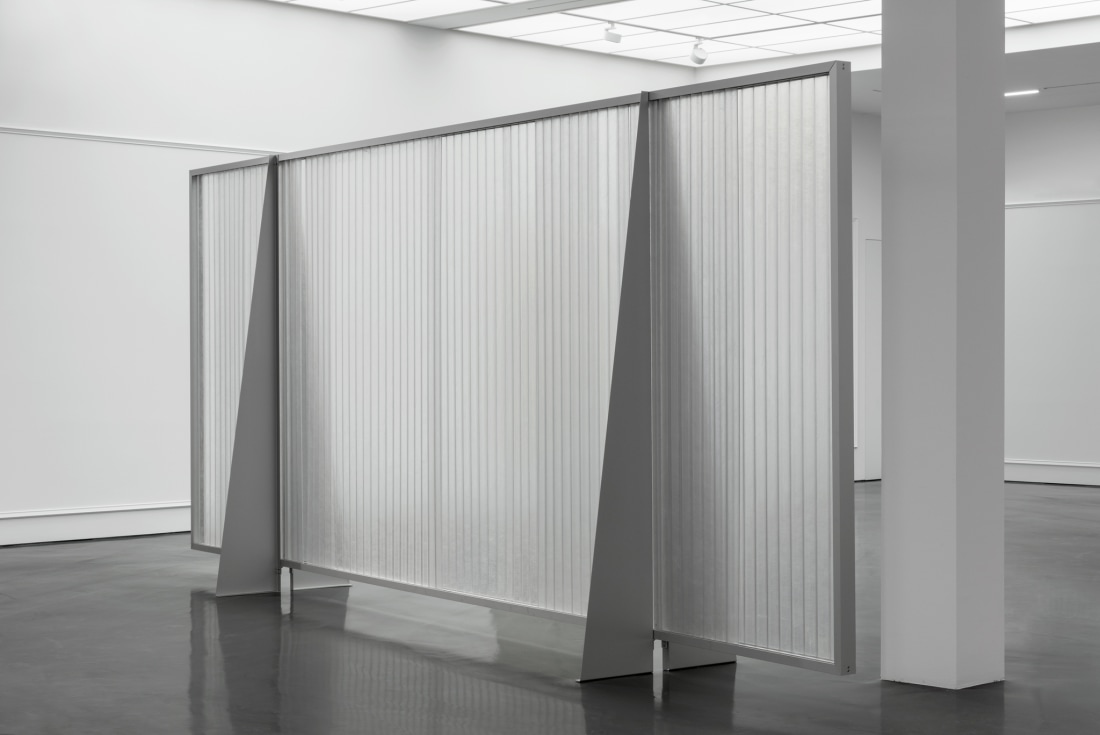MARTIN BOYCE
The large-scale free-standing work functions both as divider and frame, a form Martin Boyce has employed as part of his creation of hybrid architectural landscapes to highlight the polysemy of screens as boundaries, openings, and markers of liminal spaces. Its diaphanous quality—the surface is made from semi-transparent glass-reinforced plastic mounted over a rectangular metal frame—emphasizes its function as conceptual threshold.
Large-scale gates or screens that structure Boyce's urban landscapes, creating parcours or individuated pockets of space, have combined architectural and urban references. While fences, gates, windows, composed of upturned benches, metal grilles, or chains, that recalled the temporary constructions of low-cost housing or shantytowns have been a recurring motif, this new work further articulates the implicit debt to the sliding paper walls of traditional Japanese architecture. At the same time, the translucency invokes the effect of curtains paradoxically shielding the large glass windows of modernist buildings, blurring what was conceived as an architecture of transparency, thus invoking the demise or, at the very least, a willful misreading of modernist ideas, so often a topic in Boyce's work.
